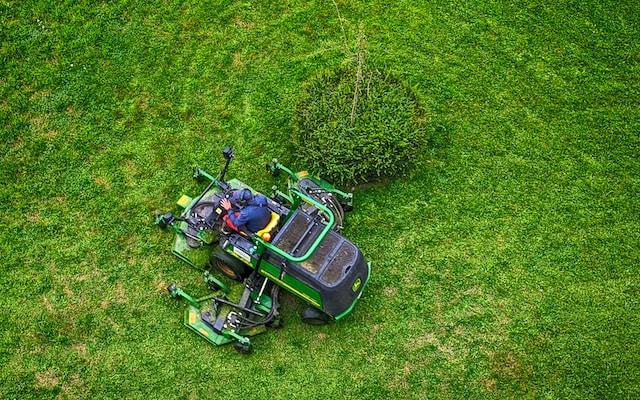Brown stains and lifeless patches are the worst enemies of a lovely lawn. And, while minor stains or patches may appear harmless at first, they might be indicators of more significant problems in your yard.
If your grass has dead patches or brown areas, there are a few things you can do to maintain it healthy and avoid a headache later on. We have three fast methods to keep your grass looking great.
Before mending the brown patches on your lawn, look at the growth patterns to identify what could be causing the dead grass. Understanding the causes of brown patches in your yard will help you avoid them in the future.
While restoring brown patches is not difficult, you should be aware of recommended procedures and guidelines to ensure the best possible grass regrowth. We’ll show you how to fix a brown patch in your lawn in this article. So, continue reading:
Table of Contents
What Are The Main Causes Of Dead Spots?
Every homeowner will encounter bare patches and dead spots on their lawn at some point. Many difficulties might result in dead patches and bare regions, and the cause isn’t always clear. So, the few basic reasons for dead spots in the lawn are following:
- Poor quality soil
- Solar damage
- Fungal infection
- Lack of Aeration
- Unnecessary grass Seeding
- Pests and weeds
No matter how well you take care of anything, it will ultimately need to be repaired, just like most things in life. The same can be said for your yard.
Maintenance isn’t always enough, no matter how well you take care of your grass. Fungal disease and poor soil conditions are all possible causes of dead patches in any home or property. Fortunately, the majority of concerns are simple to resolve.
Steps To Fix The Dead Spots In The Lawn
Many people underestimate how difficult it is to repair dead spots. We’ll start with a list of things to do when it comes to getting dead grass to grow so that you can make sure you’re taking the appropriate steps and giving your lawn what it needs.
1) Lawn Aeration
The goal of aerating your lawn is to make microscopic holes in the ground that allow air, water, and necessary nutrients to reach the plant roots easily. You can produce healthier, thicker grass by giving the roots an extra boost. It’s also crucial to aerate your lawn to avoid soil compaction damage.
When soil is packed too tightly, it compresses, lowering the amount of air and water absorbed. Even if you only have two or three noticeable dead spots on your lawn, aerate it all. You can rent a hand aerator for smaller yards, and for larger yards with more compacted soil, you can rent a machine aerator.
2) Add New Fertilized Soil
Dead grass patches are caused by a variety of factors, including poor soil. The most excellent option to offer much-needed nutrients and enhance soil quality is to top-dress your lawn with compost.
Compost enhances the soil structure by adding organic matter. Its nutrients are released gradually, which is better for your grass than a single chemical fertilizer application.
The most accessible type to use is fertilized compost. Because the pellets expand when wet, a bag covers a far more extensive area than you may expect. Apply a thin layer to the entire yard, concentrating on the dead areas and in need of repair.
3) Scatter New Grass Seeds
Choose high-quality seed that is suited to your climate. Scratch the seed lightly so that some are incorporated into the top quarter-inch of soil, and some are near the surface.
To ensure good seed/soil contact, lightly tamp the surface. To begin reseeding your grass, lightly distribute seed in the newly prepared barren patches while inspecting the entire lawn. If the grass appears to be thin or sparse, you should overseed it all.
After reseeding, make sure to water thoroughly. After all, watering is still an essential part of maintaining lush, green grass. Keep the fresh seed moist until it germinates, which takes around five to seven days. Reduce the frequency of watering once the seeds have germinated.
4) Use Right Fertilization Products
Damage might also occur if the material is placed on your lawn incorrectly. Fertilizer burn occurs when too much fertilizer is put into the grass. Excess products might dehydrate your grass, causing it to be yellow and eventually die.
All lawn care products must be used in the correct quantity and at the correct time. Additionally, depending on the turf, some lawn care chemicals may be required. You want to be sure that your lawn care business is using the proper materials at the right time to be as effective as possible while also avoiding any difficulties.
5) Hire A Lawncare Professional
If you’re attempting to figure out how to make dead grass grow again, the first step is to contact a specialist. Not just any professional, but one who is well-versed in laws and what they require to thrive. What is the significance of this?
Because your lawn problem necessitates a precise professional analysis. Many conditions could be causing your dead grass patches, and many of them share similar symptoms.
Final Thoughts
Above all, you must get your lawn problem professionally analysed, as time is often of the essence when it comes to finding a remedy. You’ll have peace of mind knowing that your lawn is getting back on track and that those dead spots will be filled in soon if you hire the proper specialist.
You’ll soon be admiring your lush lawn. However, you can also deal with the dead spots in your lawn yourself by following the discussed tips and steps. Keep in mind that you have to be patient while tackling the dead spots or patches in your lawn because it is time-consuming.





